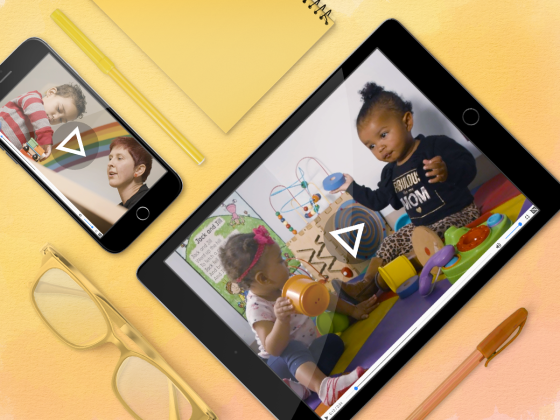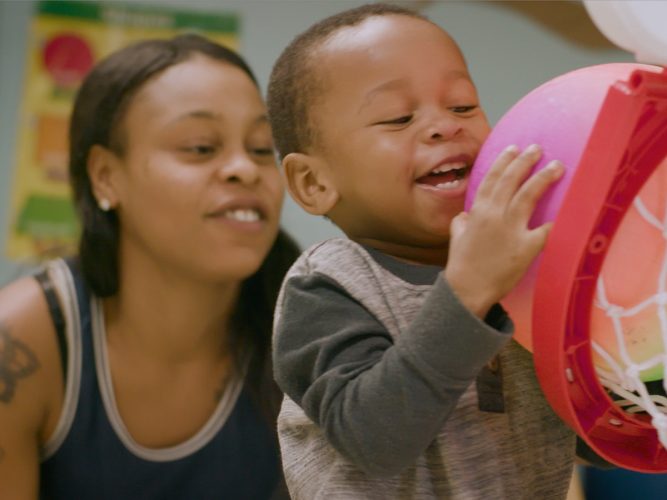
Promoting Healing Through Play in Shelters
You can enrich any space to create more opportunities for play—and healing.
Join our friends from the Boston-based Horizons for Homeless Children as they share their Playspace Program. You’ll gain ideas for simple interactions that you can use in any space to help children and their families heal from traumatic experiences. The model can be replicated on any scale and in any setting serving young children and families.
Before you begin, watch this training video featuring staff and volunteers from Horizons for Homeless Children.
Now explore the resources in this workshop and consider ways you can use the ideas and strategies in your own work.
Children experiencing homelessness often lack clean, safe play spaces—preventing them from growing and thriving. Depending on where they are staying, children may be shushed for normal child-like behavior that others consider disruptive. So the more you can enrich your site to encourage play, the better.
Watch this video one time through as providers from Horizons for Homeless Children explain the strategies used in each play space. Notice:
- ways in which each of the spaces helps kids develop and heal
- what approaches providers take within that space
- how each space builds children’s social-emotional skills
- ways in which each space addresses children’s learning needs
On a second viewing, write down or tell a colleague one observation, idea, or question sparked by each area presented:
- Infant Spaces
- Arts and Crafts
- Manipulatives
- Literacy Area
- Dramatic Play
Then consider your space and one small way you might enrich your site to invite children to engage in play—even a basket of children’s books, a beanbag, or a box of blocks or dolls go a long way.
Now that you’ve looked at the different areas, further consider your own space and what you might add to offer comfort. Watch the video Special-Special Comfort (meant to share with children) and reflect:
- Where in your space could become a “cozy corner”?
- What are some comfort items you might add to that area to soothe children? (pillows, stuffed animals, dolls, blankets, soft fabric, and so on)
- Is there a way for you to distribute small comfort items to children?
You might suggest to parents that they offer their children a piece of their clothing to hold when they are apart (even a small piece cut off from an item they no longer wear). If appropriate, they can show children the video and talk about their comfort items.

